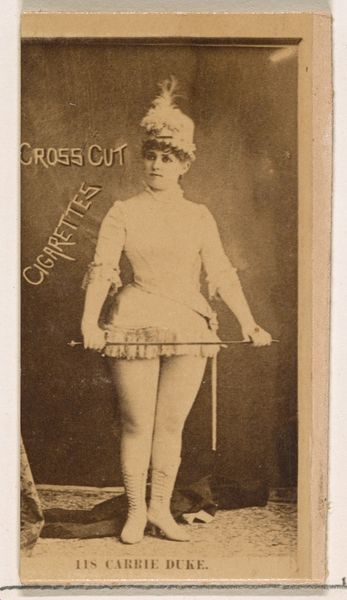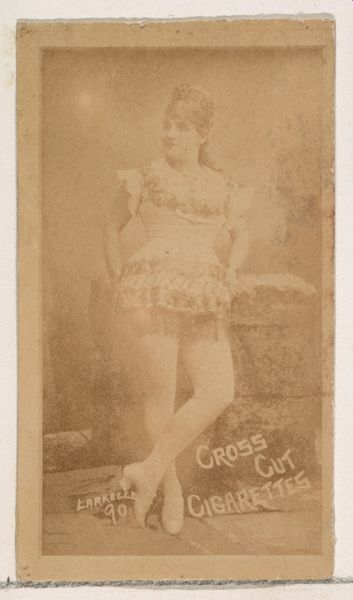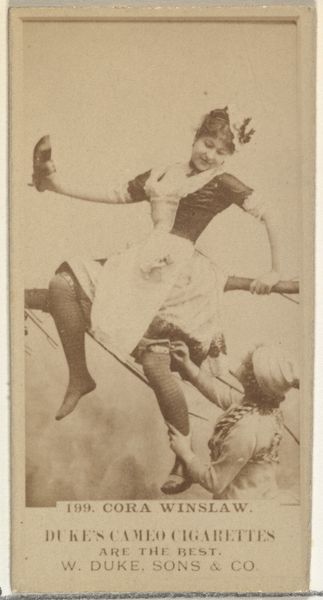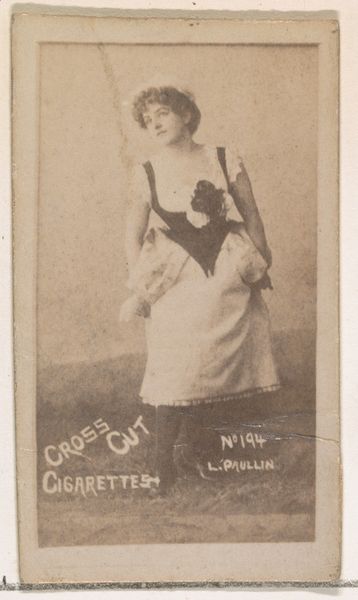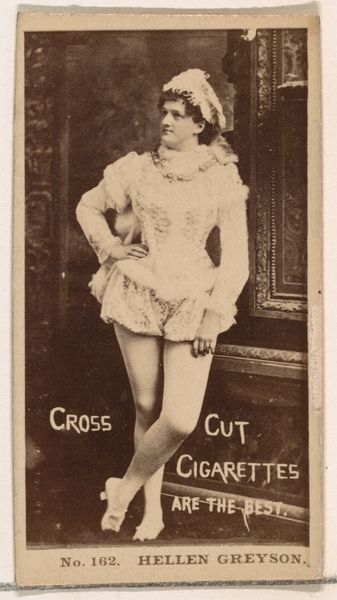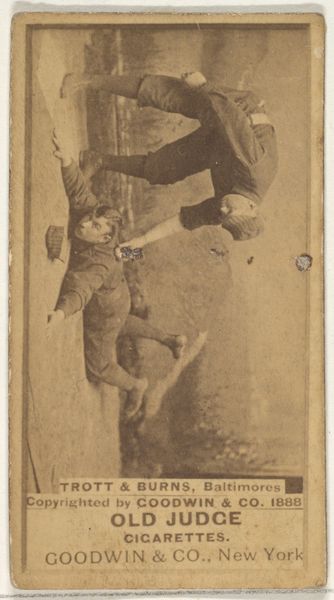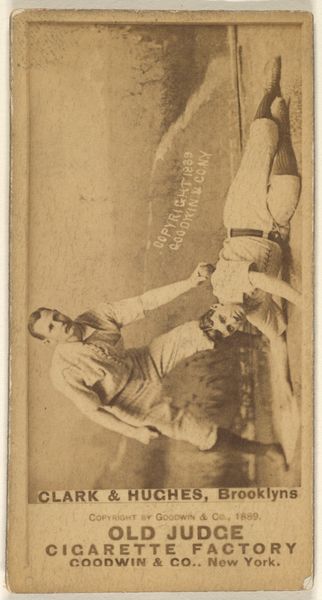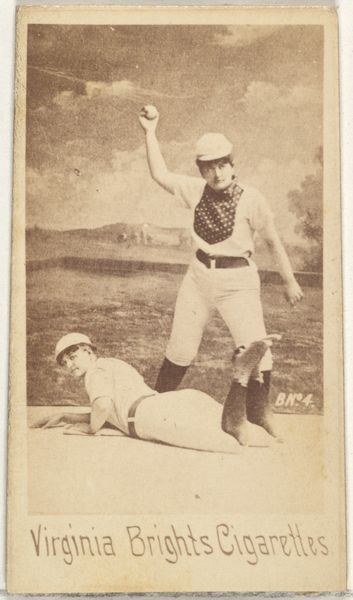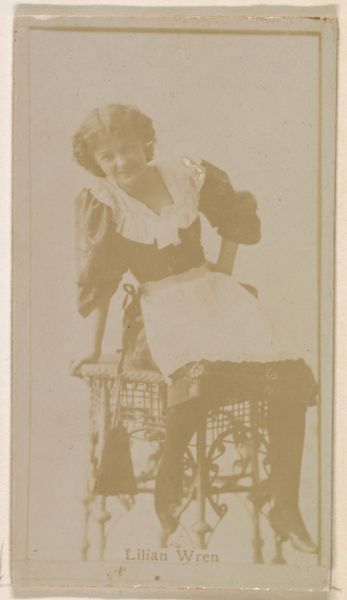
Card Number 118, Deitz, from the Actors and Actresses series (N145-2) issued by Duke Sons & Co. to promote Cross Cut Cigarettes 1880s
0:00
0:00
drawing, print, photography
#
portrait
#
drawing
# print
#
photography
#
genre-painting
Dimensions: Sheet: 2 5/8 × 1 7/16 in. (6.6 × 3.7 cm)
Copyright: Public Domain
Editor: This is Card Number 118, featuring Miss Deitz, from the Actors and Actresses series made around the 1880s by Duke Sons & Co. to promote Cross Cut Cigarettes. It’s currently housed at the Met. The photograph has this almost sepia tone and looks so innocent; it is quite striking given that it was made to advertise cigarettes. What do you make of it? Curator: It’s fascinating how these cards functioned as both promotional material and as collectibles. We see the rise of mass media and consumer culture. Duke Sons & Co., by associating their cigarettes with actresses, are tapping into a cult of celebrity and glamour, and really constructing a desire through cultural reference. This suggests an active social construction of taste. Where were these cards circulated and how might that matter? Editor: I think they were included directly in cigarette packs, weren’t they? Like a small bonus? So they were easily available to the consumer. It must have worked because this type of marketing was so successful. I’m now wondering, are we elevating advertising to the realm of art simply because it now resides within museum walls? Curator: Exactly. Museums inherently ascribe value. By displaying these commercial cards, we are implicitly acknowledging their cultural significance, making them “art” even if they were initially conceived as mere marketing tools. Does that sit comfortably with you? Editor: Not completely, but it is an interesting challenge to our modern perspectives of art! Curator: Absolutely, and that is exactly why museums, in their collections and public programming, continue to hold a valuable public service. What I learned is to continue to be self-reflective in thinking about the museum’s role in culture.
Comments
No comments
Be the first to comment and join the conversation on the ultimate creative platform.

